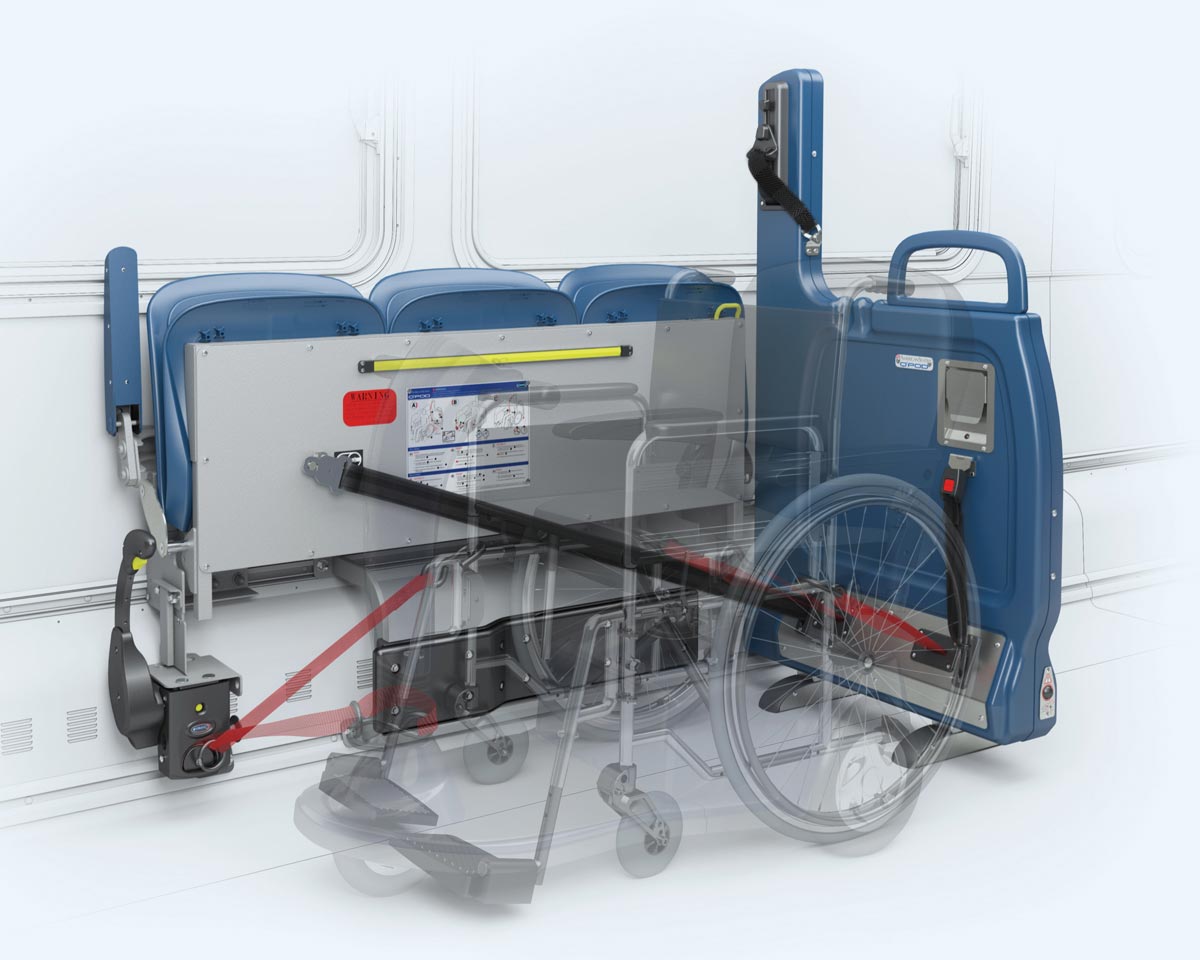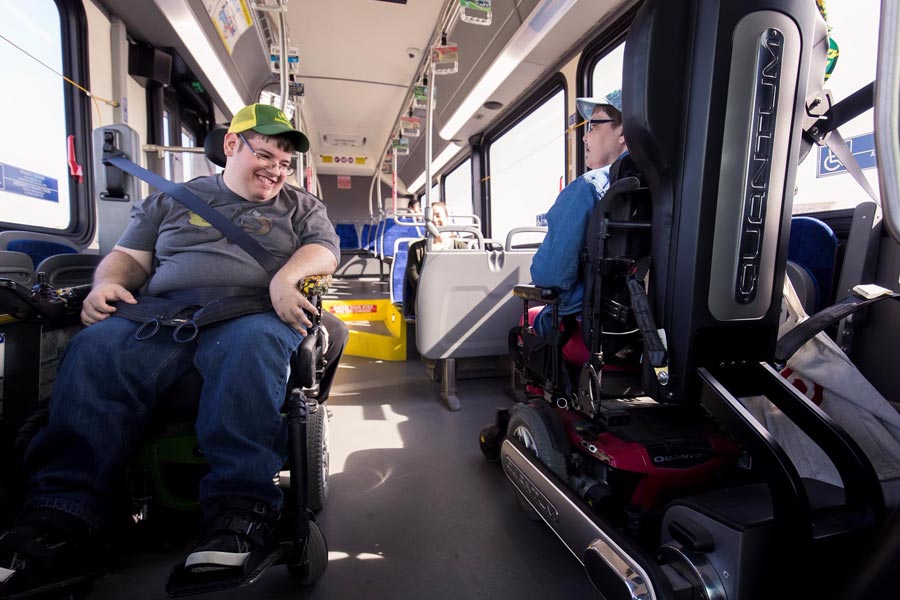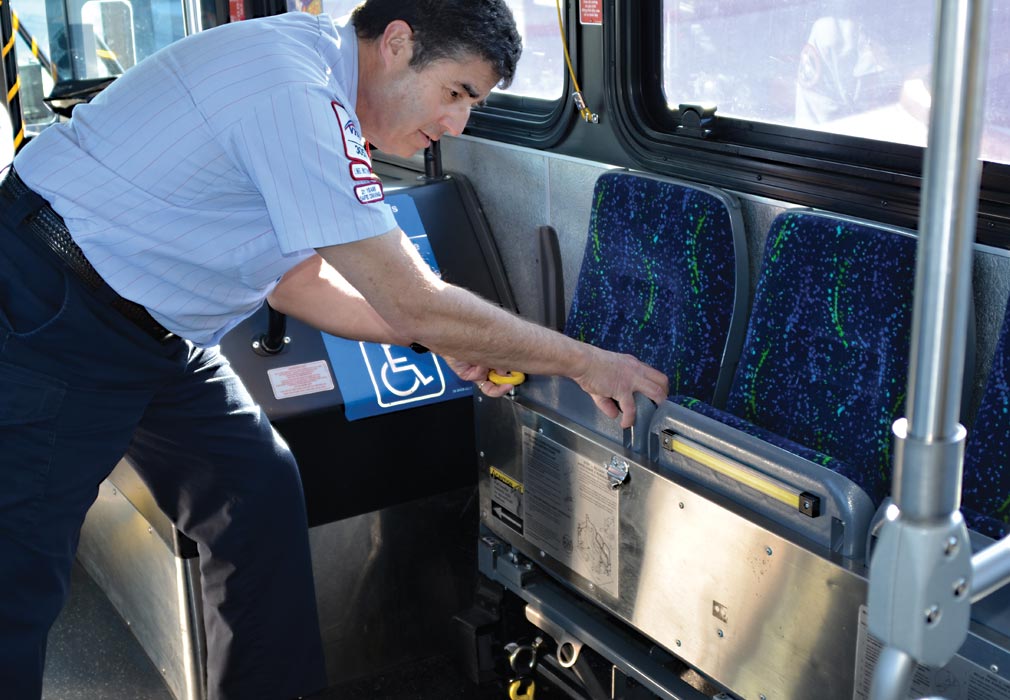
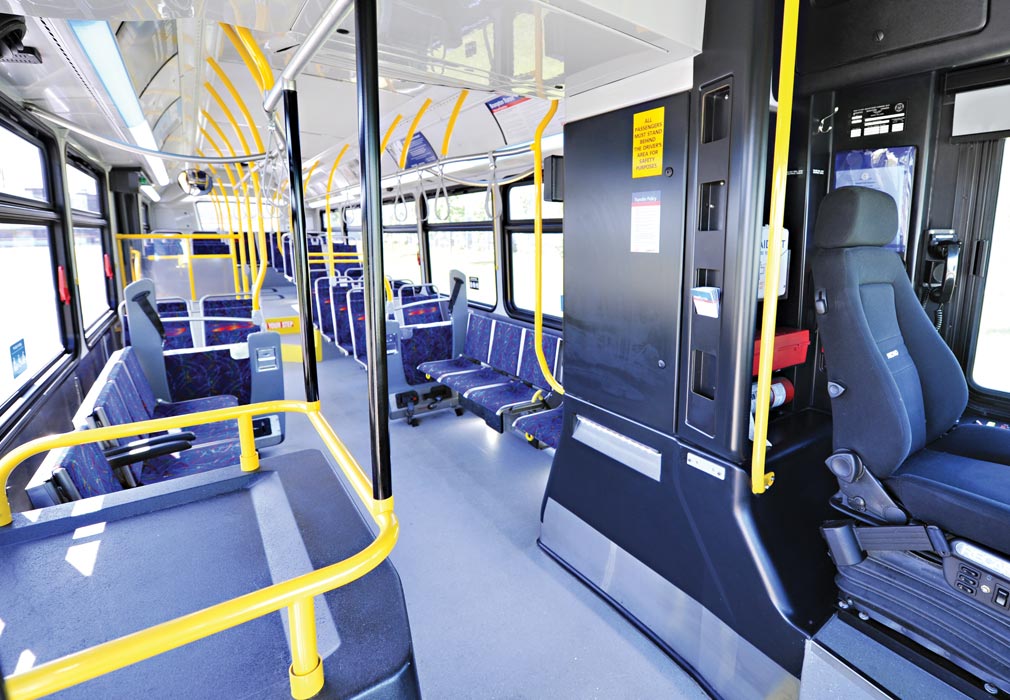
Q’POD Case Study: Brampton Transit
Brampton Transit Increases Accessibility while Simplifying Operation and Maintenance with Q’POD

Brampton (Ontario) Transit and the city’s Accessibility Advisory Committee take well-deserved pride in their commitment to assuring that Brampton’s disabled population can enjoy and participate in all that the “Flower City” has to offer. To that end, the transit service has installed 120 Q’POD wheelchair securement stations in 60 of its 327 buses since 2011, says Brampton Transit’s Manager of Maintenance Alan Grocott.
Q’POD has been well-received by operators, passengers and maintenance staff alike.
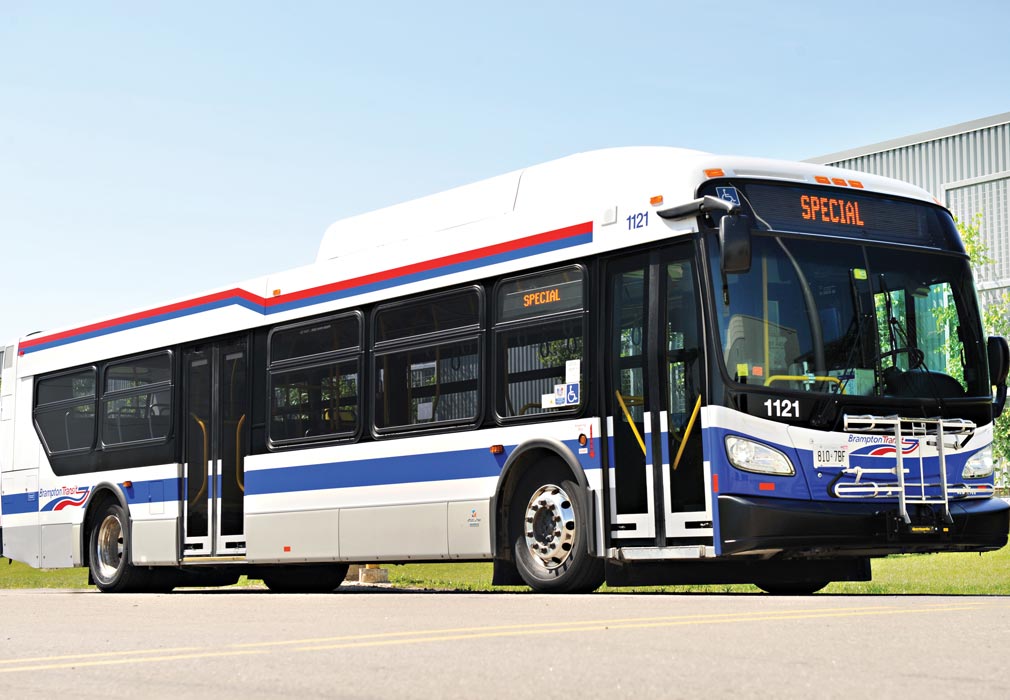

“With previous systems, the grime that collected on belts could compromise the safe working of the system. This is not the case with Q’POD,” Grocott says. “In terms of repair, maintenance staff has reported no issues with Q’POD. To date, it has proven to be very reliable.”
Grocott also says the Q’POD stations are faster and easier to clean than the systems they replaced. “Seats are easily vacuumed and washed down while the chair belts remain salt and grime-free. With previous systems, salt, mud and dirt were often an issue because the belts rested on the floor.”
Operators say Q’POD is easy to use and enables them to quickly secure a passenger without having to intrude in a rider’s personal space. “Drivers don’t need to crouch on the floor or lean over the rider,” says Peter Alder, Senior Manager of Operations at Brampton Transit. “The securement process is clean, since the belts are neatly tucked away until use. And once secured, the passenger is positioned in a way that allows them to get off easily when they reach their stop.”
Q’POD’s ease of use also reduces the impact of wheelchair securement on bus schedules and other riders, Alder adds.
“Q’POD is the kind of technology that supports the City of Brampton’s vision of creating a vibrant city that can be easily accessed by all residents. This system allows users to maintain their independence through easier use of transit as well as maintain their dignity while doing so.”
Accessibility is about removing barriers, and in Brampton, that’s what two Q’POD stations per bus are accomplishing.
“When a rider gets on the bus, the chairs fold up, allowing for a greater turning radius for the wheelchair or scooter. And once secured, the rider can easily access the stop-request button,” says Alder. “Passengers in wheelchairs and scooters ride in comfort. They face the front of the bus and use of the chair belts is their option.”
Passengers confirm that Q’POD makes a difference. “It gives me and other mobility device users more freedom and the opportunity to become independent in society,” one wheelchair passenger told Brampton Transit. “My wheelchair easily fits in the wheelchair spot. It’s much better than earlier systems as I had a hard time turning around inside the bus. So I didn’t use the service as much. Now I don’t have any problem and I use it often.”


Q’POD Case Study: Brampton Transit
Brampton Transit Increases Accessibility while Simplifying Operation and Maintenance with Q’POD

Brampton (Ontario) Transit and the city’s Accessibility Advisory Committee take well-deserved pride in their commitment to assuring that Brampton’s disabled population can enjoy and participate in all that the “Flower City” has to offer. To that end, the transit service has installed 120 Q’POD wheelchair securement stations in 60 of its 327 buses since 2011, says Brampton Transit’s Manager of Maintenance Alan Grocott.
Q’POD has been well-received by operators, passengers and maintenance staff alike.


“With previous systems, the grime that collected on belts could compromise the safe working of the system. This is not the case with Q’POD,” Grocott says. “In terms of repair, maintenance staff has reported no issues with Q’POD. To date, it has proven to be very reliable.”
Grocott also says the Q’POD stations are faster and easier to clean than the systems they replaced. “Seats are easily vacuumed and washed down while the chair belts remain salt and grime-free. With previous systems, salt, mud and dirt were often an issue because the belts rested on the floor.”
Operators say Q’POD is easy to use and enables them to quickly secure a passenger without having to intrude in a rider’s personal space. “Drivers don’t need to crouch on the floor or lean over the rider,” says Peter Alder, Senior Manager of Operations at Brampton Transit. “The securement process is clean, since the belts are neatly tucked away until use. And once secured, the passenger is positioned in a way that allows them to get off easily when they reach their stop.”
Q’POD’s ease of use also reduces the impact of wheelchair securement on bus schedules and other riders, Alder adds.
“Q’POD is the kind of technology that supports the City of Brampton’s vision of creating a vibrant city that can be easily accessed by all residents. This system allows users to maintain their independence through easier use of transit as well as maintain their dignity while doing so.”
Accessibility is about removing barriers, and in Brampton, that’s what two Q’POD stations per bus are accomplishing.
“When a rider gets on the bus, the chairs fold up, allowing for a greater turning radius for the wheelchair or scooter. And once secured, the rider can easily access the stop-request button,” says Alder. “Passengers in wheelchairs and scooters ride in comfort. They face the front of the bus and use of the chair belts is their option.”
Passengers confirm that Q’POD makes a difference. “It gives me and other mobility device users more freedom and the opportunity to become independent in society,” one wheelchair passenger told Brampton Transit. “My wheelchair easily fits in the wheelchair spot. It’s much better than earlier systems as I had a hard time turning around inside the bus. So I didn’t use the service as much. Now I don’t have any problem and I use it often.”
Comments are closed.
